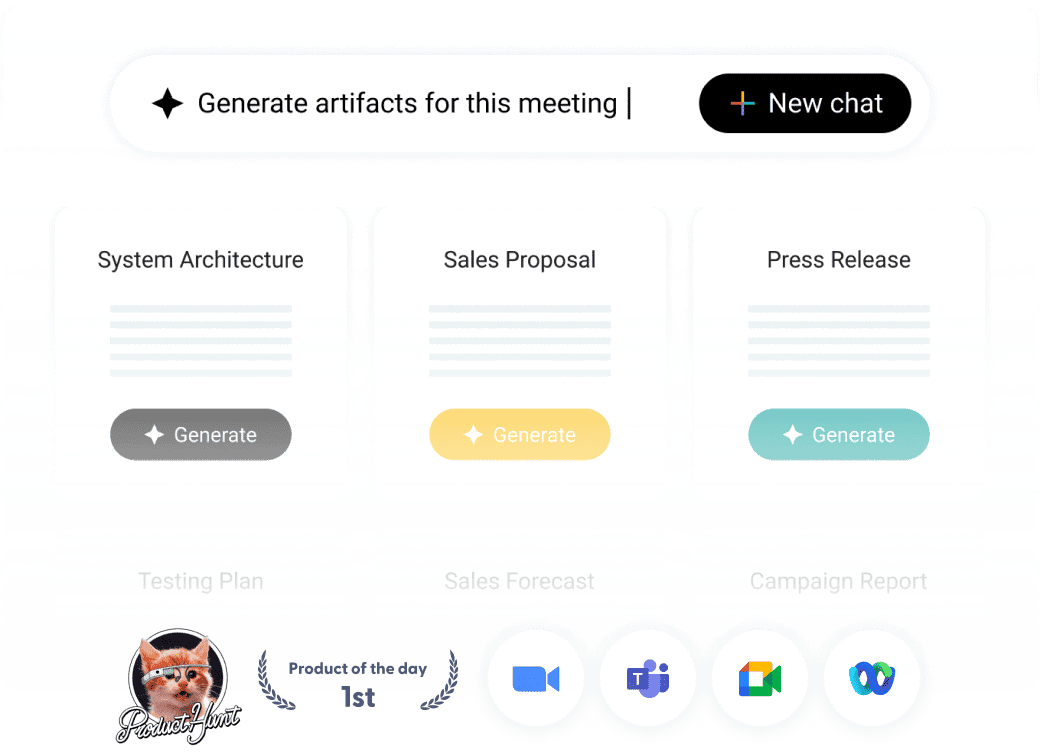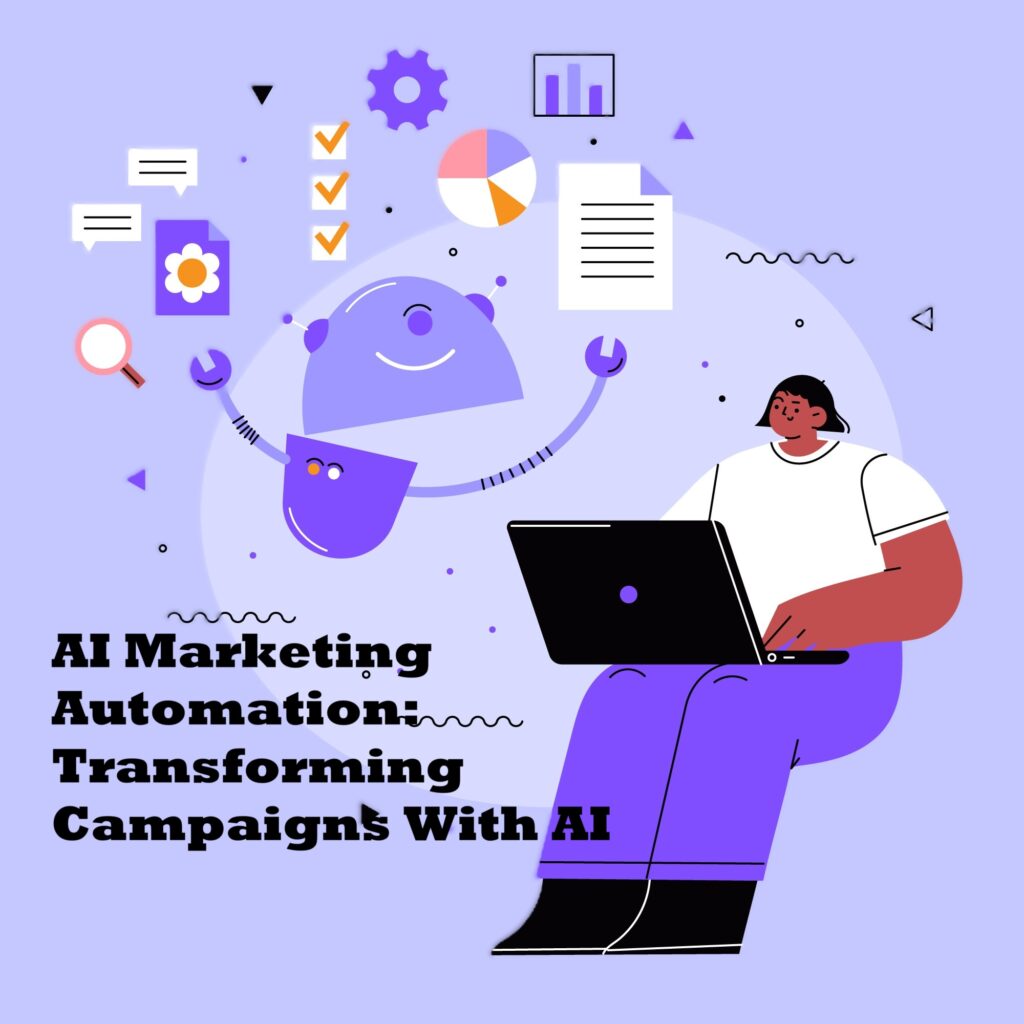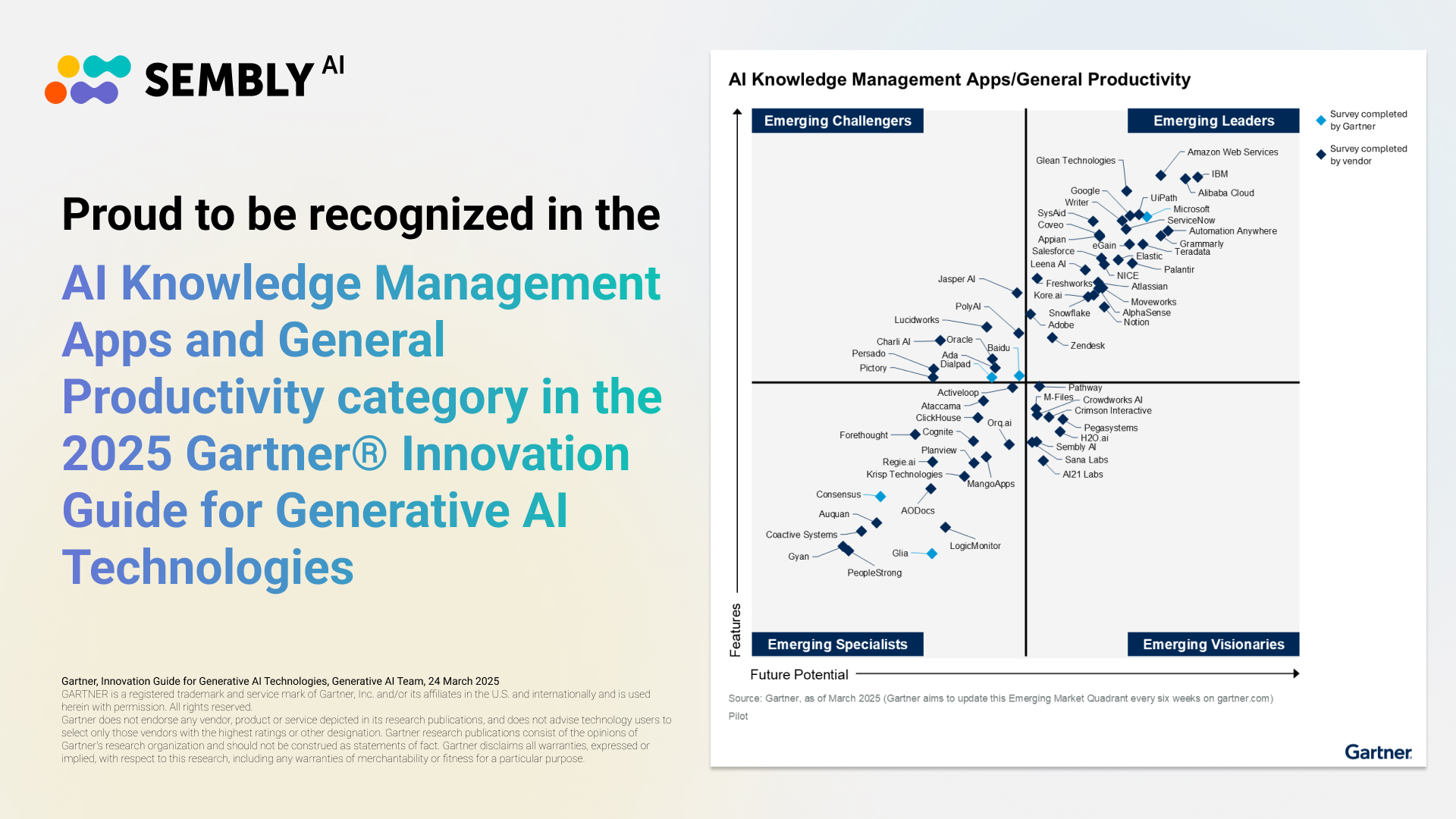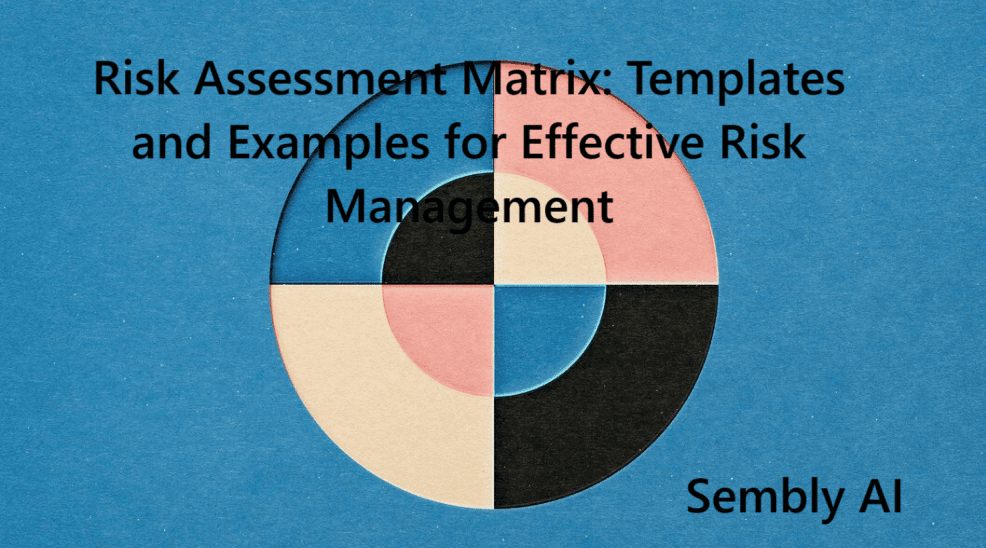Table of Contents
ToggleRecently updated on February 6th, 2025
At all times, marketing teams across industries and domains face a universal challenge: delivering meaningful customer experiences at scale. While AI marketing automation provides solutions, most businesses in 2025 barely scratch the surface of this advanced technology, using it for basic tasks. This creates a gap where revenue opportunities and valuable customer relationships get lost.
The truth of the matter is that modern marketing strategies transcend basic automation. AI now reads customer signals, predicts intent, manages content marketing, and crafts personalized customer journeys that feel natural and authentic rather than programmed.
The results speak for themselves—organizations mastering AI-driven marketing automation see an immediate boost in conversion rates. And, it should be said that this approach works well for both startups at the very beginning of their business journey and well-established enterprises with decades of experience. Today, in our guide, we are going to take a closer look at AI in marketing automation and unpack the building blocks of effective AI-driven marketing processes, exploring strategies that drive real results and measurable profits. So, let’s turn your marketing into a growth engine instead of a cost center together!
What Is AI Marketing Automation?
AI-powered marketing automation is a technology system or rather an infrastructure solution that combines artificial intelligence with marketing tools for workflow automation. At its core, it’s an intelligent system that processes customer data and automates routine marketing tasks while learning and, therefore, improving itself from each interaction.
Additionally, AI in marketing automation serves as a complete system for managing customer communications and campaigns across diverse marketing channels. This system lays the groundwork for creating, delivering, and optimizing personalized marketing experiences at scale.
The Difference Between Traditional and AI-Driven Marketing Automation
Basically, traditional marketing automation can be compared to a robot following a preset script—it sends emails at set times and follows the same steps based on every customer reaction. AI-based marketing automation, in turn, acts more like a smart assistant that learns on the job. AI systems watch how customers behave, figure out what works best, and adjust their approach without waiting for human input. While traditional systems need constant manual updates, AI systems get smarter with each customer interaction, requiring minimal human intervention when done right.
| Feature | Traditional Marketing Automation | AI-Driven Marketing Automation |
| Decision Making | Fixed rules and schedules | Learning and adaptation from data |
| Personalization | Basic segmentation by demographics or absence of personalization | Dynamic personalization based on customer behavior |
| Campaign Optimization | Manual testing and updates | Automatic optimization in real-time |
| Data Analysis | Historical reporting | Predictive analytics and insights |
| Scalability | Limited by manual setup | Scales with data and usage |
| Response to Changes | Requires manual updates | Adapts automatically |
| Lead Scoring | Static rules-based scoring | Dynamic scoring based on customer behavior |
| Content Selection | Pre-scheduled content delivery | Smart content recommendations |
While AI brings powerful capabilities to marketing automation, it represents evolution rather than revolution. Traditional automation laid the foundation with a rule-based system and AI builds upon this by adding learning and adaptation. This fundamental difference makes AI-driven solutions more efficient at scale and better suited to handle complex customer journeys. Also, you can read our other article about the specificity of using AI in B2B marketing automation, where integrating AI with complex B2B relationships is the focus of the article.
Core Components of AI Marketing Automation
While AI in marketing automation could seem overwhelmingly complex based on the previous sections, it’s actually a straightforward system. It’s all about how businesses manage their marketing operations. Here are four key areas where AI drives significant changes in marketing processes and outcomes.
- Content Intelligence and Creation: AI guides content strategy through performance analysis and audience insights. The system automates content delivery while learning what works best.
- Analytics and Insights Generation: AI processes customer data to uncover patterns and predict behaviors. The system turns these valuable insights into actionable recommendations.
- Communication Management: AI coordinates personalized messages across marketing channels while maintaining style consistency. The system optimizes timing and content based on engagement data.
- Campaign Performance Optimization: AI tests and adjusts marketing campaign elements to improve performance metrics. The system automatically applies successful patterns across similar campaigns.
Why Use AI in Marketing Automation?

In today’s guide, we won’t focus too much on advantages, as we have previously written a dedicated article about the benefits of marketing automation. So, refer to it for a detailed explanation of all the advantages. However, here are 6 concise reasons why your business needs to use artificial intelligence for marketing automation:
Time and Resource Efficiency
AI handles repetitive tasks that would take hours of manual work. This frees up your team to focus on strategy and complex marketing tasks.
Data-Driven Decision Making
AI processes customer data faster than any human team could manage under any circumstances. It spots patterns and opportunities that might go unnoticed in traditional analysis.
Personalization at Scale
AI tracks individual customer preferences and behaviors to deliver relevant content. Each customer receives a tailored personalized experience without straining your resources.
Predictive Marketing
AI forecasts customer behavior based on historical patterns and real-time data. This helps you anticipate needs and act before competitors do. You can identify potential churn risks and opportunities for upselling before they are apparent.
Continuous Optimization
AI tests and improves campaigns without manual intervention. Your marketing gets better with each customer interaction.
Enhanced Customer Experience
AI guarantees consistent messaging across all touchpoints based on customer preferences. Customers receive relevant information when they need it most.
Top Applications of AI Marketing Automation
Now, let’s explore how AI-powered marketing automation operates in practice. These applications showcase the most effective ways businesses can leverage AI to enhance their marketing efforts and drive better results:
Smart Email Campaigns
First of all, AI impacts traditional fields of digital marketing such as email marketing campaigns. Here, AI-powered tools analyze open rates, click patterns, and conversion data to optimize email timing and content. These tools adapt subject lines, body text, and CTAs based on individual recipient behavior. It identifies optimal send times for each subscriber and predicts which content will drive the highest engagement in each particular case. At the same time, advanced machine learning models continuously refine email strategies based on performance data, which saves your marketing teams a ton of manual efforts and time.
AI-Powered Content Recommendations
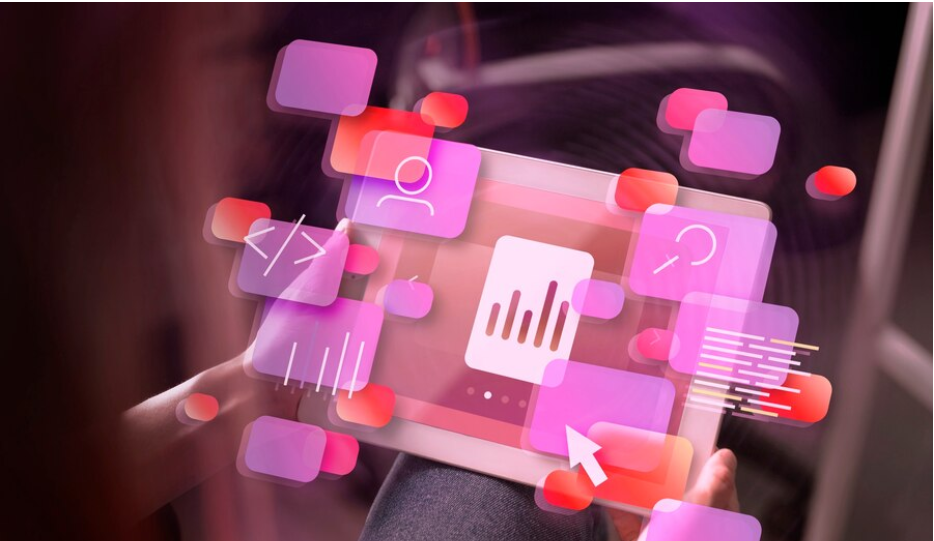
Artificial intelligence also can help with content management. First of all, this section is about content recommendation systems which are practically impossible without AI. In this case, AI-powered tools track user interactions to suggest relevant content, regardless of the chosen communication channel. It learns from engagement metrics to refine content and product recommendations and increase content consumption. Therefore, AI content recommendations create a self-improving cycle: as users engage with suggested content, the system learns more about their preferences, leading to even better recommendations. This feedback loop helps maintain user engagement while reducing content creation costs.
Lead Scoring and Qualification
AI evaluates leads based on their behavior patterns, engagement levels, content downloads, email interactions, website visits, social media engagement, purchase history, and response times to communications. The system continuously updates scores as new interactions occur. Machine learning algorithms identify patterns in successful conversations to improve scoring accuracy. This helps sales teams prioritize leads more effectively and increases overall conversion rates. The system adapts scoring models based on industry-specific factors and buying cycle patterns.
Sales Funnel Optimization
Sales funnels are another area where AI excels. AI-based marketing automation tools identify bottlenecks and drop-off points in your sales funnel. The system suggests optimization strategies based on successful conversion patterns. Combined with advanced analytics tools, AI tracks customer progression through each stage, enabling real-time adjustments to maximize conversion rates. Here we have a complete guide on the best sales automation tools where we explain sales automation in detail.
Dynamic Landing Page Personalization
In this field, AI customizes landing page content, offers, and CTAs based on visitor behavior and traffic sources. The system tests different variations and automatically implements winning combinations. It analyzes visitor segments to deliver targeted messaging and offers. Machine learning techniques allow AI to predict which content combinations perform best for specific audience segments. Additionally, the technology continuously optimizes page elements to improve conversion rates and adapts to changes in visitor behavior and market conditions.
Chatbot Engagement
AI-powered chatbots have become a common sight across various websites, handling customer questions and lead qualification around the clock. Each interaction helps them deliver more accurate responses as their machine-learning capabilities improve their understanding of context and user intent. This automated learning process transforms chatbots from basic Q&A tools into intelligent marketing assistants that qualify leads and guide customers through their buying journey.
Social Media Marketing
As of 2025, AI already manages thousands of social media accounts across the platforms. With AI-powered marketing automation, marketing teams can effortlessly analyze social media performance and audience engagement patterns. AI-driven systems can optimize posting schedules, suggest content ideas, and identify trending topics relevant to your audience. It helps maintain a consistent brand voice while adapting to platform-specific requirements.
For content creators, machine learning algorithms predict optimal posting times and content types for maximum engagement. Modern technologies can also monitor competitor activities and industry trends to guide your overall social media strategy. Automated sentiment analysis helps gauge audience reception and adjust messaging accordingly, while natural language processing, eventually, helps identify and respond to relevant conversations and mentions. Tools like Semblian 2.0 are going even further. It turns team discussions into ready-to-post social media content with a built-in AI assistant. The platform syncs content across channels and picks optimal posting times. This helps marketing teams reach more people while staying focused on their creative goals.
Cross-Channel Campaign Coordination
Cross-channel campaign coordination stands as a vital element of modern marketing. AI-driven marketing automation syncs messaging seamlessly across email, social media, ads, and websites, ensuring consistent brand voice and timing. The system tracks customer interactions across these channels, using behavioral data to optimize engagement strategies. This unified approach helps identify the most effective touchpoints for customer interactions while preventing message fatigue, ultimately leading to more efficient and targeted marketing campaigns.
How to Implement AI Marketing Automation Effectively
While the technology offers powerful tools, as we can see from previous sections of our text, overall marketing success still depends on a strategic approach not just simply automating existing processes. Companies that thrive with marketing automation start with a few foundational steps. Here are the core practices that form an efficient basement for any AI-driven marketing automation strategy:
Define Goals and Metrics
Set specific objectives for your automation strategy. Track key metrics such as email engagement and qualified leads. Establish clear team goals that connect marketing activities to business operations and outcomes. This will create shared accountability.
Choose the Right Tools
Evaluate AI automation platforms based on your specific needs and goals. Consider factors like integration capabilities, scalability, and ease of use. Test different solutions to ensure they align with your workflow requirements before committing.
Integrate AI Workflows Gradually
Start with simple automation tasks and gradually expand. Map existing processes and identify automation opportunities. Crete clear handoff points between AI and human tasks to maintain quality control.
Upskill Your Team
Train your team on new tools and AI capabilities. Foster the development of both technical and strategic skills. Develop comprehensive documentation and establish best practices to facilitate continuous learning.
Set Clear Processes
Define workflow steps and delineate areas of responsibility. Create standard operating procedures for common tasks. Establish quality control checkpoints throughout automated processes.
Monitor and Optimize
Track system performance and team adoption rates. Adjust processes based on feedback and results. Keep documentation updated as workflows evolve.
Overcoming Common Challenges in AI Marketing Automation
While AI-powered marketing automation offers powerful capabilities, businesses often face common hurdles when implementing these systems. From data quality issues to team resistance and deep ethical questions, these challenges can slow down adoption and limit results. Let’s examine these roadblocks and strategies to overcome them for smoother implementation of AI into your marketing strategies.
Messy Data Creates Messy Results
Most marketing databases grow messy over time, defeating even the smartest AI. Customer records get duplicated, contact details become outdated, and formatting inconsistencies creep in. In some sense, you can think of it as trying to navigate with an outdated map – even the best GPS won’t get you to the right destination. Companies that succeed with AI marketing start by cleaning their data foundation and maintaining data quality standards. This sets up their automation tools for accurate insights and better campaign performance.
Data Privacy and Security Concerns
AI marketing tools collect and process vast amounts of customer data, posing significant privacy and compliance risks. Beyond basic regulations like GDPR and CCPA, companies face challenges with data encryption, access controls, and third-party integrations. Leading organizations address this by implementing strict data governance policies, regular security audits, and transparent data collection practices. They also train teams on privacy requirements and strictly limit data access to essential personnel only.
Team Adoption and Training Issues
Most teams resist new automation tools, viewing AI as a threat rather than an asset. In this case, the solution lies in clear communications and hands-on training. Show teams how AI handles routine and repetitive tasks, freeing them to focus on strategy and creative work, greatly improving marketing team efficiency. Also, try to build confidence through small wins and gradual system rollouts.
Integration With Legacy Systems
Old automation software, which is already used by many companies, often clashes with new AI systems, creating data silos and workflow gaps. Success in combining AI and marketing automation requires careful planning of system integration and data flows. Start with critical touchpoints, test thoroughly, and expand gradually (we have already written about it, but this point is of utmost importance). Additionally, we should note that many companies find success using middleware solutions to bridge old and new systems.
Budget Constraints and ROI Pressure
Automating marketing with AI solutions requires significant upfront investment, making ROI justification challenging. Smart organizations start small, focusing on high-impact areas that show quick returns. Track key metrics for business revenue right from day one, document wins, and use early successes to build the case for expanded investment.
Take the Next Step in AI-Driven Marketing With Semblian
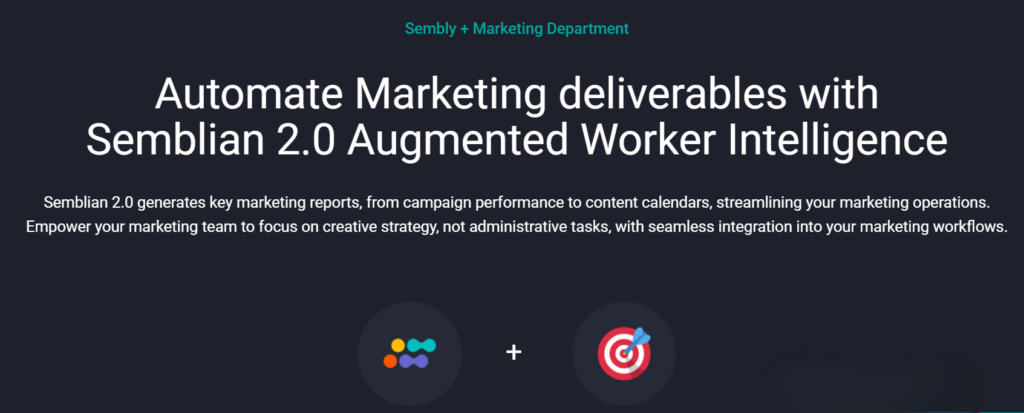
The market today is saturated with marketing automation software. Some platforms try to solve every challenge at once, while others address specific needs like email marketing campaigns or social media management. Many of them just complicate workflows without adding real value, which makes finding the right solution critical. Semblian 2.0 offers a different approach—focusing on core marketing tasks that teams face daily.
Using Semblian for marketing streamlines essential marketing work through intelligent automation. With it, content teams can quickly produce optimized articles and maintain publishing calendars, while digital marketing specialists track performance and develop channel strategies. The platform handles routine tasks like SEO reporting and brand document creation, freeing marketing teams to focus on creative strategy and campaign development. The platform also enhances team collaboration through automated meeting minutes creation while adhering to proper Google Meet etiquette. With Semblian, teams can fully engage in discussions instead of taking notes, as this smart assistant automatically captures and organizes key meeting points.
For companies new to AI automation, Semblian offers an ideal starting point. Its intuitive interface and modular design enable the teams to adopt automation at their own pace, starting with basic meeting notes and expanding as comfort grows.
Ready to transform your marketing workflows? Try Semblian 2.0 today and experience the difference intelligent automation can make.
FAQs
What are the main benefits of implementing marketing automation with AI for small businesses?
Artificial automation marketing automation saves time by handling routine tasks, improves lead quality through smart scoring, and enables personalized customer communication at scale – all while reducing business operational costs.
When should companies start marketing automation using AI?
Start as soon as you have lean customer data and clear marketing goals—you don’t need a large team or budget to begin automating basic tasks like email marketing campaigns or lead scoring.
How can human intelligence and AI marketing automation tools complement each other?
AI marketing tools excel at data processing and repetitive tasks, while human intelligence provides creative thinking and strategic decisions. Together, they create more effective marketing campaigns.
How does AI help segment audiences and target audiences more precisely?
AI processes customer data to identify natural audience segments based on behavior patterns. It then helps target these audiences with personalized content and offers that match their specific interests.
Introducing Semblian 2.0
- ✦ Multi-Meeting Chats
- ✦ AI Insights
- ✦ AI Artifacts
